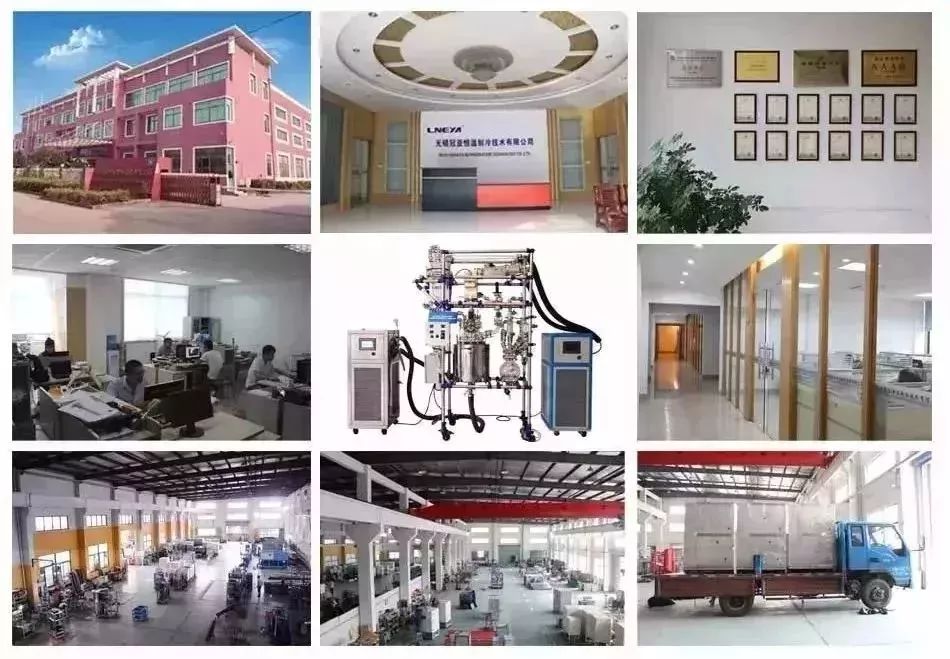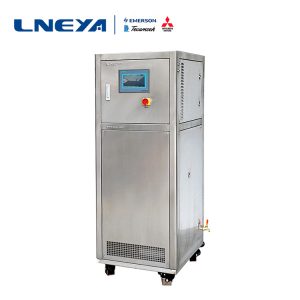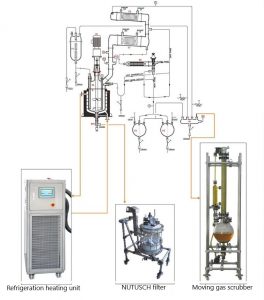The principle of LNEYA chiller
Industrial chillers are commonly used to cool products and machinery for a variety of different applications, including injection molding, tools and die cutting, food and beverage, chemicals, lasers, machine tools, semiconductors and more.
In most process cooling applications, the pumping system circulates cold water or water/glycol solution from the chiller to the process. This cooled fluid removes heat from the process and the warm fluid returns to the cooler. Process water is a means of transferring heat from the process to the cooler.
The process cooler contains a compound called a refrigerant. There are many types of refrigerants and applications depending on the temperature required, but they are all based on the fundamental principle of compression and phase change of the refrigerant from liquid to gas and back to liquid. This process of heating and cooling the refrigerant and changing it from a gas to a liquid and returning again is a refrigeration cycle.

The refrigeration cycle begins with a low pressure liquid/gas mixture entering the evaporator. In the evaporator, heat from the process water or water/glycol solution causes the refrigerant to boil and the refrigerant to change from a low pressure liquid to a low pressure gas. The low pressure gas enters the compressor where it is compressed into a high pressure gas. The high pressure gas enters the condenser, and the ambient air or condenser water removes heat and cools it into a high pressure liquid. The high pressure liquid moves to the expansion valve, controlling the amount of liquid refrigerant entering the evaporator, including restarting the refrigeration cycle.
LNEYA air-cooled cooling equipment uses ambient air to cool and condense hot refrigerant gas back into the liquid. It can be located inside the cooler or can be remotely located outside, but in the end it will block the heat from the cooler to the air. In a water-cooled condenser, water from the cooling tower cools and condenses the refrigerant.
Verwandte Empfehlungen
-
Wie wählt man eine Heiz- und Kühlvorrichtung für den Reaktor aus?
1472When the user selects the heating and cooling device of the reactor, if the heating and cooling device of the reactor is not well understood, it will not know how to start when selecting, so how to choose the heating and cooling of the reactor is ...
Details anzeigen -
High and low temperature device related instrument maintenance instructions
1637The liquid medium should be added before the high and low temperature circulation device is used. The liquid medium generally uses more than 95% alcohol, and the liquid medium cannot be lower than the working plate 20mm. The high and low temperatu...
Details anzeigen -
Hochwertige professionelle Ausrüstung hilft dem Labor, unendlich viele Ergebnisse zu erzielen
2826In recent years, China's economy has continued to grow. Under the development opportunity of professional high and low temperature integrated machines, laboratory scientific and technological achievements are also in sustainable development. LNEYA...
Details anzeigen -
Analysis of the characteristics of LNEYA precision chillers
1696Now, in many industrial productions, industrial chillers are needed to achieve the purpose of refrigeration in production operations. This shows that chillers play a very important role in various industrial production. The precision chiller uses ...
Details anzeigen
 LNEYA Industriekühler Hersteller Lieferant
LNEYA Industriekühler Hersteller Lieferant














